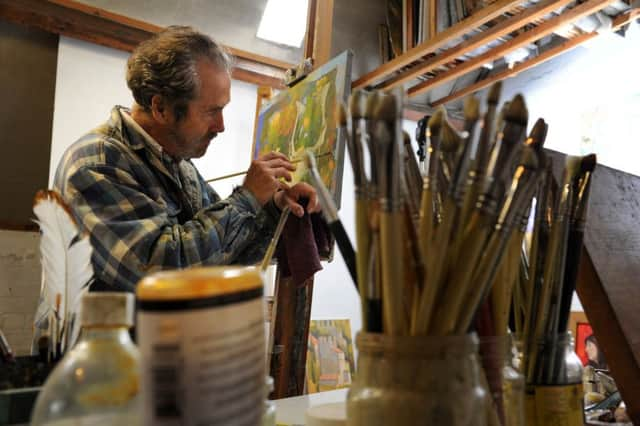Graeme Willson, artist


In particular, his three altarpiece paintings and a ceiling piece for the Yorkshire Volunteers’ Regimental Chapel at York Minster, and his Cornucopia mural for Leeds Corn Exchange became local landmarks.
Perhaps the country’s leading UK’s leading mural artist, he could point to a distinguished track record stretching back more than 25 years, beginning with a prize-winning work for the Arts Council’s competition, Art into Landscape, at the Serpentine Gallery in London.
Advertisement
Hide AdAdvertisement
Hide AdHe was the recipient of numerous other awards and commissions, most notably the Royal Academy Award for Mural Painting for his work at St. Paul’s Church in Thamesmead in 1984.
Having worked part-time for many years as a tutor, he took early retirement in 2011 to devote himself to his painting full-time. “Like any other creative enterprise, it is hard work,” he told The Yorkshire Post in 2015, after a retrospective exhibition at Ilkley’s Manor House museum.
I’m a believer in that famous quote ‘It is 99 per cent perspiration and one per cent inspiration.’ And there is a compulsion in me to do it – I just feel driven to paint.”
Born in North Yorkshire, Willson had graduated from Reading University in 1973 with a degree in Fine Art, and worked as a full-time lecturer at the North Lindsey College, in what was then South Humberside, in the 1970s. From 1975 onward he was a freelance artist and visiting lecturer at York University, Bradford and Ilkley Community College, Chelsea College, the Institute of Advanced, Architectural Studies and Bretton Hall College.
Advertisement
Hide AdAdvertisement
Hide AdHe exhibited at the National Portrait Gallery, the London Contemporary Art Society, Harewood House and the Mercer Art Gallery, Harrogate. Examples of his work in watercolour were acquired by Leeds City Art Galleries for their permanent collection.
He also developed a practice in stained glass, working in partnership with the Martin Johnson Workshop in York.
Cornucopia, arguably his best known work, still occupies the four-storey wall at the junction of New Market Street and Call Lane, outside the Corn Exchange. Its themes reflect the architecture of the building and its ties to local industries, both historic and contemporary.
An earlier work, the enormously long mural, Inner City Development, was demolished during the development of Millennium Square in Leeds. It had backed on to the Electric Press Building and faced the site on Cookridge Street which had been occupied by Cuthbert Brodrick’s Oriental Baths.
Willson is survived by his widow, Polly, children Jacob and Lucy, and sisters Christine and Rosemary.